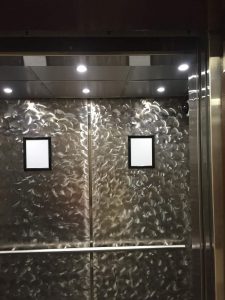When it comes to Elevator maintenance and safety, you should always leave it up to the professionals. However, you may be wondering specifically what is involved in routine Elevator maintenance. Let’s walk through the basics of a routine inspection to give you a more informed decision when deciding on elevator repairs and replacements. These are the five primary areas that we focus on with any elevator inspection:
Inside of the Cab
Typically we begin by working from the inside-out. An inspection of wall, ceiling, handrails, or lighting damage is the first safety check. The inspector will do a routine check of button functionality and check the mobility inside the cab and door operations.
Outside of the Cab
The inspector checks the exterior of the car, checking and replacing hall station lighting. We review clearance regulations to be sure that the door panel passes all safety standards. Firefighter access and standards are tested to ensure everything is up-to-code.
Machine Room
The machine room’s primary check is to ensure that there are no leaks in the room, wear and tear is normal, and electrical components are functioning without failure. Routine lubrication of parts and the system’s oil level is checked during this stage.
Top of the Cab
The stop switch and inspection station is inspected for proper functionality. Any signs of wear, damage, or disconnection are given the time and attention necessary for repairs. The inspector will check for any signs of foreign entities such as rodents, fire hazards, vandalism, or water damage.
Pit
Lights, stop switch, and GFI outlet functionality is the top priority when inspecting the pit. The inspector will often clean and check for signs of leaks or water damage. Components and spring buffers are checked for signs of corrosion and misalignment. The sump pump is cleaned and reviewed for proper operation during this stage of the inspection.
It is important to have a professional check all of the operational and electrical parts of your elevator system routinely. If you are overdue for an elevator inspection or need a thorough refresh, please contact Sapphire Elevator today at 321-613-3300







